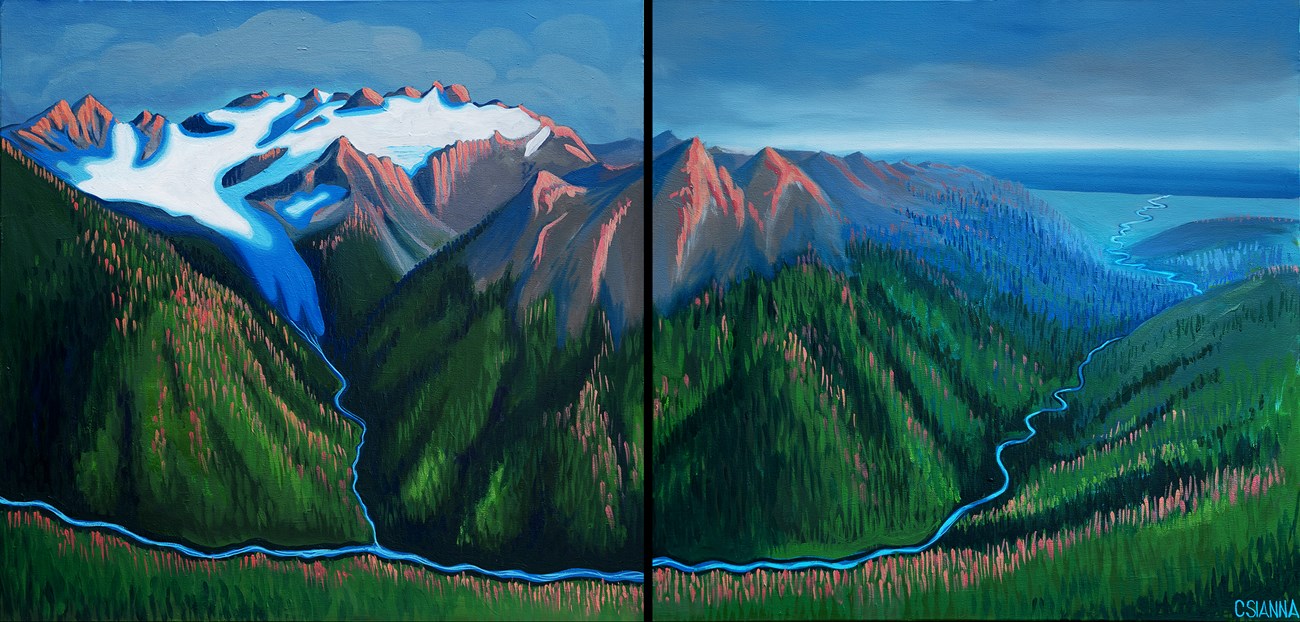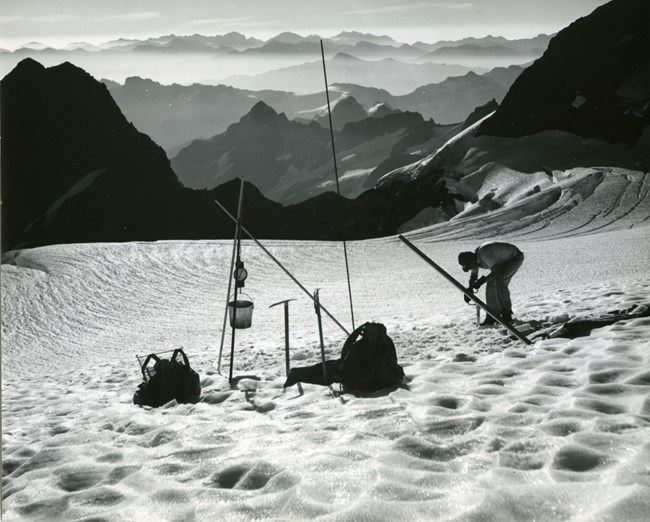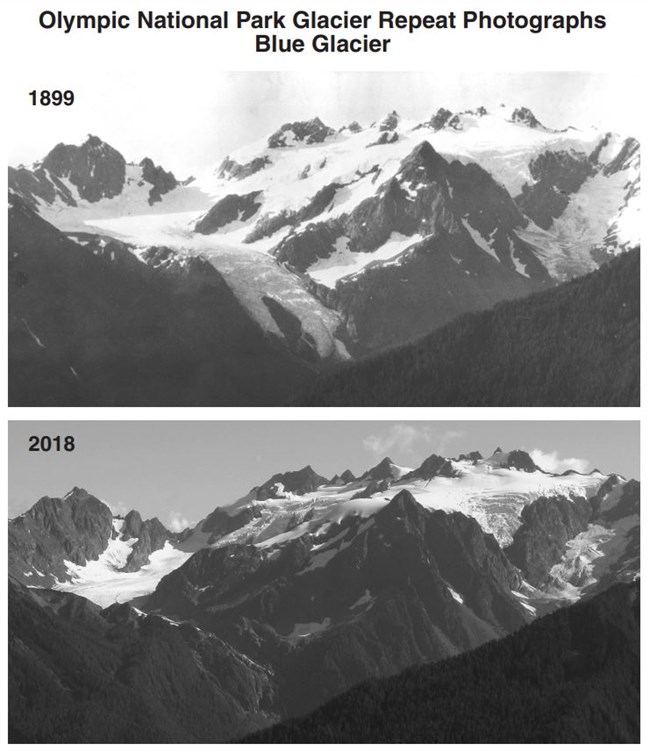

"The disappearance of a glacier does not only denote the absence of stark white in the distant peaks; it means the transformation of entire watersheds. The Blue Glacier feeds into the Hoh River via Glacier Creek. As the Hoh, the Blue Glacier’s water molecules reach the Pacific Ocean just a few miles north of Ruby Beach at the Hoh Indian Reservation. Without a steady supply of cold water from Blue Glacier, the water level of the Hoh River will decrease as its temperature increases. These new environmental conditions will affect the thirteen species of salmon the Hoh supports, the most diverse salmonid population to be found in a single river in the continental United States.
"Blue to Deep Blue documents the Blue Glacier as it was in 1899 in the darkest blue. At this time, the terminus of the Blue Glacier was much deeper in the valley, the ice like fingers reaching into Glacier Creek. One hundred and nine years later in 2008, the reaching hand is completely gone. Instead we are left with the snowpack denoted in light blue. Ten years later, in 2018, the glacier has receded to what we see in white. Given the rate of decline, the Blue Glacier, the largest in Olympic National Park, may be gone within my lifetime. I hope this artwork will serve to help us remember our glaciers, and that we may live in a way that does their memory justice." -Claire Sianna Seaman 
Meet the artist: Claire Sianna SeamanClaire Sianna Seaman is a filmmaker and painter from Leavenworth, WA, whose work grapples with the human relationship to the natural environment. More than an attempt to come to terms with and climate change, she seeks to share and cultivate community-based solutions to the climate crisis through art.
She holds a BA from Smith College in Studio Art, with a concentration in Climate Change. Since graduating from college in 2020, Claire has been featured in the Wild and Scenic Film Festival Art Exhibition and received an Artist Trust GAP Award. She was chosen for the Conservation, History, and Art (CHA) Residency from the Icicle Creek Center for the Arts and the Olympic National Park Terminus project.
In 2021, she was chosen to work with scientists from the University of Washington Climate Impacts Group to create an art piece that imagined climate resiliency in the Pacific Northwest. She will be moving to Vancouver, B.C. in September 2023 to start a master’s program in human geography at the University of British Columbia. 
LaChapelle More about the Blue GlacierThe largest and most visited glacier in the park, climbers travel its surface as they ascend Mt. Olympus, the tallest peak in the park. It is an iconic glacier often viewed from one of the Park's most popular trails, the High Divide. The Blue Glacier has a legacy of scientific study, beginning in 1957 when a historic research hut was constructed on the Snow Dome and occupied for the International Geophysical Year. Generations of glaciologists worked and studied at this site during summer months until the 1980’s. 
Matching photos show both the thinning of the glacier and the massive retreat of the snout over the last century. Quileute-Hoh tribal folklore spoke of Thunderbird living in a nest underneath this glacier and bringing whales back to feed the young there. 
|
Last updated: July 14, 2023
